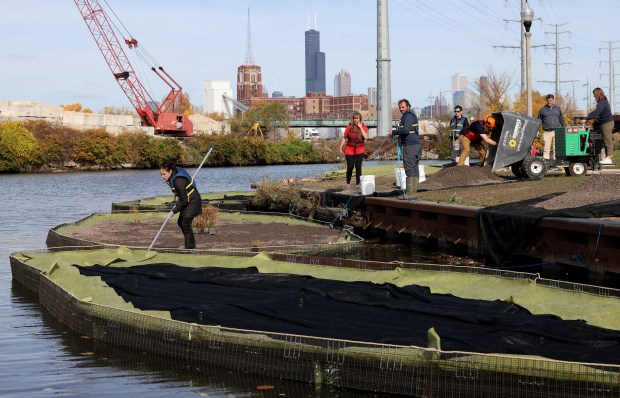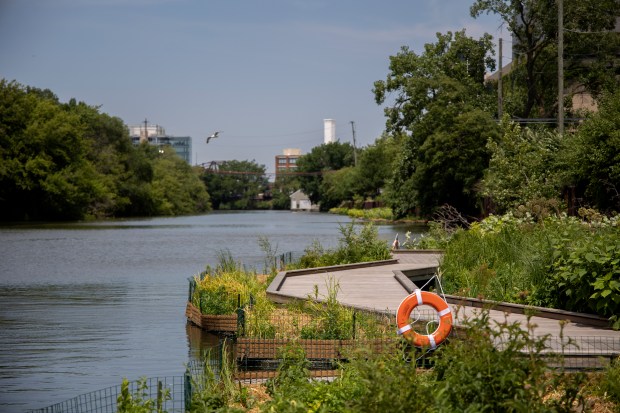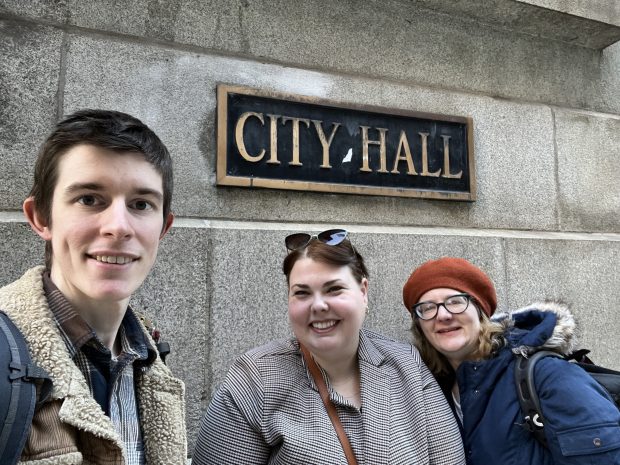It is very cold, I don’t need to tell you, but sitting with a young filmmaker named Taylor Evans Ghosal a couple of days ago, the conversation was about city parks, a river and a giant turtle who lives there.
“I haven’t seen him in a while,” said Ghosal. “Maybe this spring.”
She is part of a new company, a four-person operation called House of Bug Productions, which is formally described on its website as a “small, Chicago-based studio founded by graduate students in the Loyola University Chicago’s Digital Media and Storytelling program. Our second documentary, ‘The Wild Mile: A River Reborn’ is out now — stream it today!”
Do that. It’s not long. But before we get to that second documentary, know that the first was “No Permit Necessary,” a 16-minute cinematic visit to Washington Square Park, the city’s oldest park, three grassy acres across from the Newberry Library.
It is a terrific film and I wrote of it last year; “Using wonderful historical illustrations and photos, and contemporary video and drone shots, the park is vividly captured. I cannot imagine one watching this film not being drawn to the park for a walk.”
Making the film was so rewarding, if not financially remunerative (the team earned no money), that it led to the creation of House of Bug Productions and, after some debate, a second offering.
“Though two of the original six members moved on to other jobs and projects, the remaining four of us started our company and got to work on what has become ‘The Wild Mile,’” Ghosal said.
All have jobs in other businesses, and so they got to work on this movie in what spare time they could manage, beginning in the summer of 2023. In addition to Ghosal, who is head screenwriter and producer, the cofounding team consists of Christina Hoffmann (lead researcher and editor), Lexie Garrett (lead video editor and producer) and Duncan Hoag (director of photography).
“Our budget?” said Ghosal, smiling. “Just a little over zero dollars.”
But they were hooked by the Wild Mile, a series of floating boardwalks in the North Branch Canal of the Chicago River. (More precisely, behind the Lincoln Park REI store, 905 W. Eastman St., on the east side of Goose Island). In “The Wild Mile” you will meet some of the people who have made and continue making that, who are trying to refashion the river, are enjoying it and learning of its checkered history.
For a couple of centuries after its discovery by French explorers, it was called the River of Onions, for the foul smell it produced. Later, when the stockyards were in bloody operation, a portion of the river was called Bubbly Creek because it was filled with animal carcasses and waste that would bubble to the surface. In 1900, in a masterful piece of engineering, the river’s flow was reversed but it still has an island (Goose) and is 21 feet at its deepest point and 800 feet at its widest. It also has an estimated 25 species of fish and a bright future.
That’s one of the reasons that attracted the House of Bug gang. None of the filmmakers are Chicago natives so their passions and enthusiasms are not shadowed by over-familiarity. Their curiosity is insatiable.
“When I first saw it I was stunned,” Ghosal said. “The Wild Mile is such a special place.”
So the filmmakers got to work, spending more than a year filming and interviewing. You’ll be happy to meet the folks behind the project, Urban Rivers Executive Director and Co-Founder Nick Wesley, a palpably passionate young man who tells us that “this is a place to bring nature and humans together,” and equally enthusiastic and knowledgeable architect Philip Enquist, who tells us there is “nothing like this in the United States.”


Indeed, this is the world’s first floating eco-park. Anchored to what is called a seawall, a wetland ecosystem for a diverse range of wildlife — including beavers, muskrats, snapping turtles and all types of insects, bats, and fish — has been created by mostly volunteers.
Radio, TV and newspapers have been reporting steadily on the efforts to remake the river. Reading and listening and watching all of this, I was reminded of something Studs Terkel once said about his experiences in Bughouse Square, a place he frequented his entire life to hear its soap box orators (and where he wanted his ashes and those of his wife Ida buried after their deaths, as they were). As Terkel said, “I doubt whether I learned very much (at the park). One thing I know: I was delighted in it. Perhaps none of it made any sense, save one kind: a sense of life.”
The same could be said of the Wild Mile, which one day will stretch a full mile. I have been there often, sometimes looking for what has been named Chonkosaurus, especially after first seeing the gigantic snapping turtle reported on by my colleague Jake Sheridan, who wrote of the “new famous critter in town… and it likes to bask in the sun.”
Well, maybe next week.





